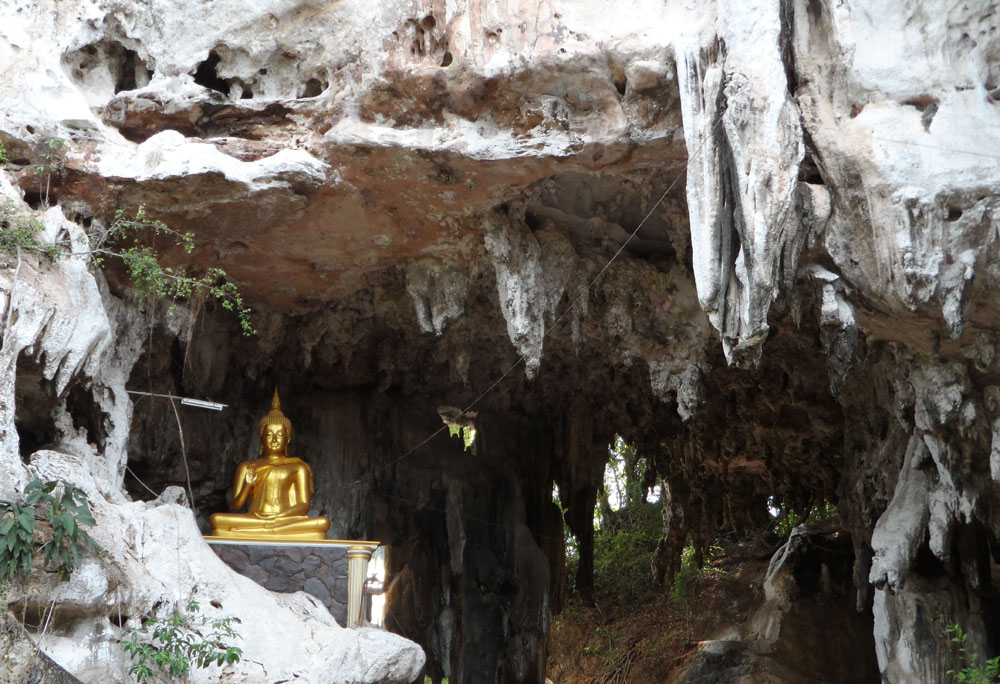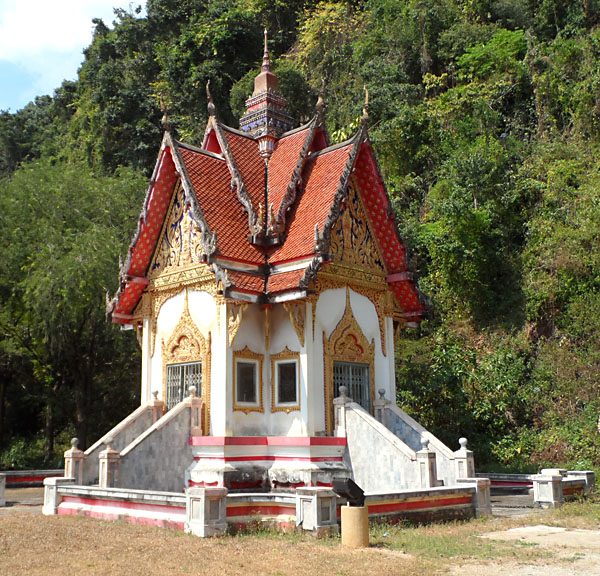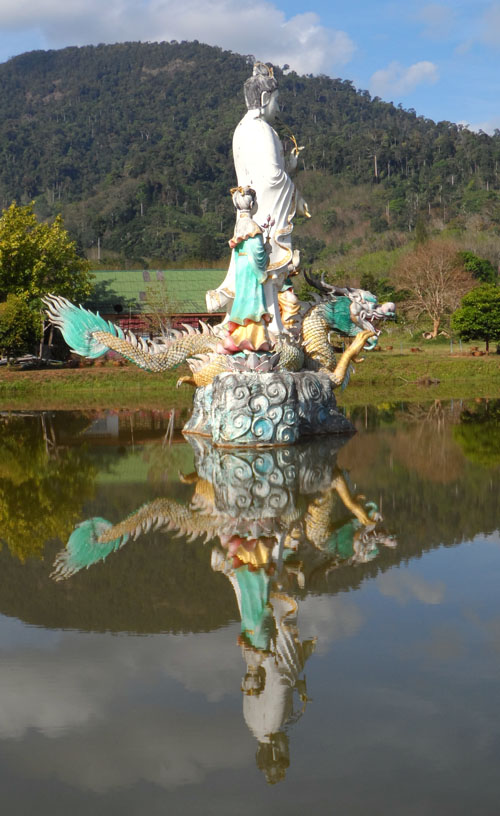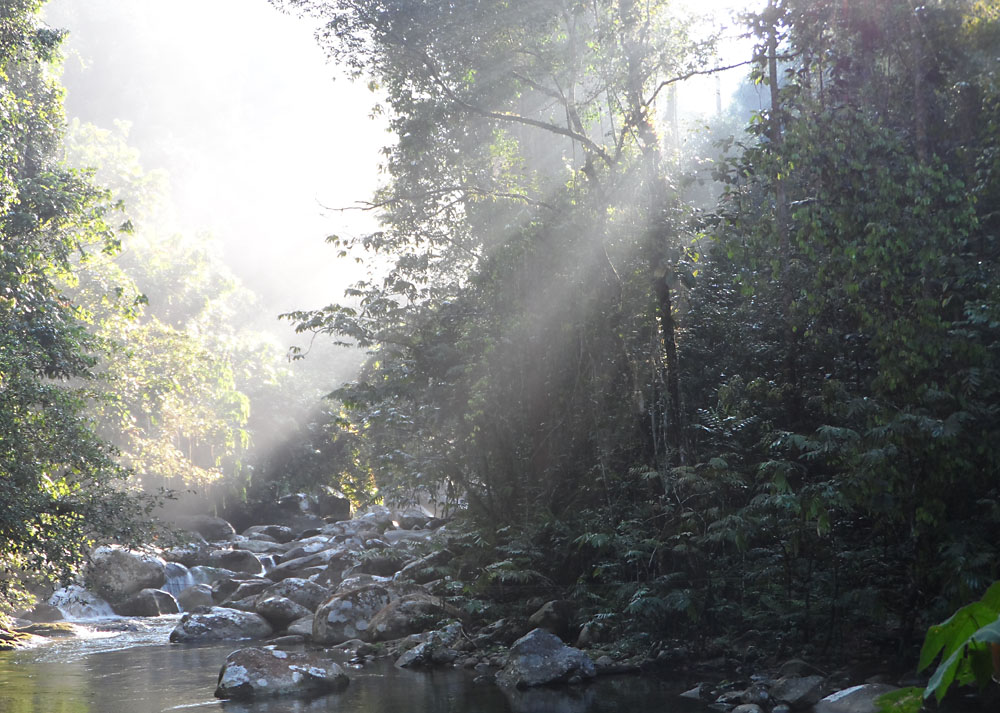The
third trip in the context of the project on Southeast Asian pholcids
brought me to Singapore, mainland Malaysia, and southern Thailand. With
me I had a "wanted"
list
of 21 known species that seemed most badly missing in the
current version of the molecular phylogeny. Some of these species were
only known from a single specimen, several had been found at only one
locality, and one had not been found since 1899. In other words,
chances to find a good number of them seemed slim.
After some 4000 km
of travelling and over 20 localities visited, 19 of the 21 species
were ticked off my list. All together we found an incredile 60 species,
about 20 of them new to science, and many of them of particular
interest for one or another reason.


Left: Buatong Cave near Krabi. In this cave we expected to find Pholcus youngae. Instead, we found another species, new to science. It remains a mystery to us, where exactly the type locality of Pholcus youngae is. Right: Temple at Wat Kuhapimuk, where we found Savarna tessellata, a species that had not been found since the Skeat Expedition came here in 1899.
Some of the
highlights were
- the discovery of several new cases of egg-parasitism
- the "re-discovery" of Savarna tessellata after 116 years
- the collection of several species that had been known from single holotype specimens only
- the collections of several species of Belisana from different microhabitats (leaf litter and green leaves)
- the collection of numerous Pholcus species from different
microhabitats like leaf litter, among buttresses, in caves, on rock
surfaces, among vegetation, and on the underside of green leaves.


Left: At the sea near Sam Roi Yod National Park, Thailand. Right: Lake at Khao Lek.

Primary forest in Gunung Liang, Malaysia.
Before and during this trip I was very fortunate to count on the help of several people in planning itineraries, in preparing permits, and in accompanying me to the field. In Singapore I was supported by Jospeh Koh (below with his wife Peifen) and David Court, the Malaysia part was facilitated by Noraisha ..., while Amir Ridhwan and Kamir Braima helped with logistics and field work, and in Thailand I had the continuous and invaluable support of Booppa Petcharad (below with Vinas Saksongmuang who was with us in Hala Bala and Yala). The success of this trip is to a very large part due to the enthusiasm and kindnes of these people. Thanks is also due to the German Reserach Foundation (DFG) for financing the trip (project HU 980/11-1).

My companions in Singapore (Joseph Koh and his wife Peifen, David Court), Malaysia (Amir Ridhwan, Kamil Braima), and Thailand (Vinas Saksongmuang, Booppa Petcharad).

